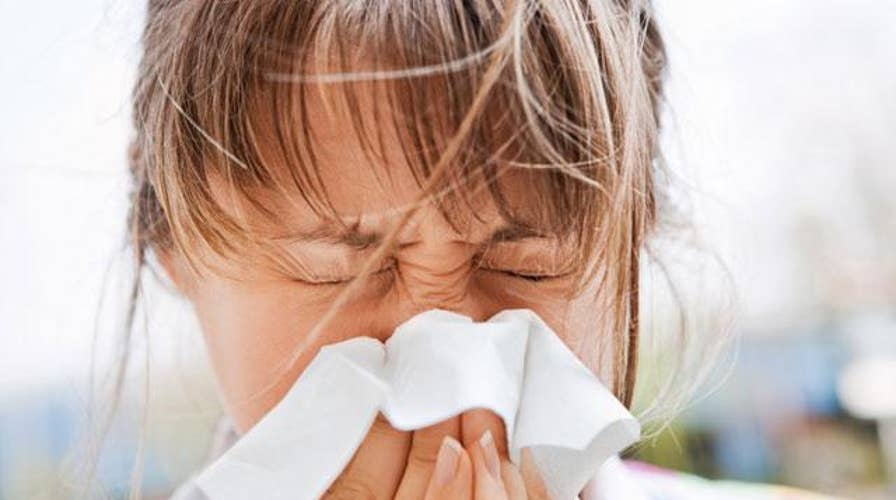Non-traditional allergy relief
Nearly 100 million people suffer from allergies and asthma. If you’re one of them you know just how debilitating they can be. Taking medicine and changing your lifestyle can help but there are alternative treatments available. Dr. Clifford Bassett talks about biofeedback, immunotherapy and phototherapy as options
Nearly 100 million people suffer from allergies and asthma, with symptoms ranging from the occasional sniffle to debilitating headaches and additional pains. While taking traditional medicines and altering your lifestyle can offer some relief, new alternative treatments like biofeedback, immunotherapy and phototherapy are helping allergy sufferers take control of their symptoms.
To better determine which treatment may help patients find relief, it’s important to understand what’s behind the seemingly meteoric rise in allergens.
First, new weather patterns and rising greenhouse gases, which may favor higher levels of pollen, combined with climate change have brought on earlier and longer pollen seasons believed to increase the likelihood of developing nasal allergies in sensitive people.
Other explanations include associations between a decrease in early childhood infections, an over-scrubbed or sanitized environment and a rural vs. urban lifestyle which can result in greater exposure to indoor allergens and pollutants, may favor a more allergy prone immune system.
To treat these rising cases of allergy symptoms, many individuals and consumers are looking for care that is not solely based upon medications. Alternative treatments for allergy and asthma relief may be an adjunctive effort for a more integrative or “whole-body” approach.
Alternative type treatments currently being analyzed by researchers for effectiveness include biofeedback, exercise, yoga, traditional Chinese medicine, acupuncture and diet modification. One study found a correlation with fast food consumption in children and allergies, eczema and/or asthma.
It is speculated that an underlying factor in a variety of allergic conditions and/or asthma is heightened stress and anxiety. Thus, it is hoped that adjunctive-type treatments like biofeedback, yoga, massage therapy and exercise may provide benefits when used in conjunction with medical treatment.
An OB/GYN colleague came to my office recently after suffering from hives for months. Before embarking on any diagnostic tests, I noted that she had undergone two recent stressful life events, coinciding with when her hives first appeared. In addition to prescribed antihistamines, I recommended that she work with a psychiatrist colleague who is well-versed in various mind-body approaches, including mindfulness training, dance therapy, yoga and cognitive behavioral therapy. Within a few weeks, the severity and frequency of her hives dramatically improved; within six weeks, they were gone.
I realize that this sort of non-medication intervention does not work in every case, or in most. And when it does work, it won’t always be easy, quick or complete. Still, I hope that this illustrates how some conditions, which often manifest on the skin, may have a psychological component, and how our understanding of and approach to these conditions, are evolving, thanks in part to the emerging science of numerous mind-body concepts.
Here are a few more complementary approaches that have been studied:
Immunotherapy: This therapy is a non-medication based treatment that helps your immune system become more tolerant to common environmental allergens that you are allergic to. The goal is to reduce symptoms and slow the progression of allergies and/or asthma. Although it has been around for many decades, researchers are striving to identify those methods that may allow for faster relief and reduced time needed for treatment. Immunotherapy is given via different methods, whether it be allergy shots in-office or sublingual drops or tablets used at home. Some researchers are even evaluating the benefit of toothpaste delivered immunotherapy.
Psychological interventions and behavioral therapy: This therapy may be used alongside traditional treatments in patients with asthma, allergies and even certain common skin conditions. This may be construed as a mind-skin connection or “psychodermatology” that involves the “cross talk” happening with various skin conditions and immune responses (More on this therapy can be found in my new book, "The New Allergy Solution"). This approach may be beneficial as a complementary treatment for medical management. The studies that have been conducted in this area are encouraging.
Biofeedback: Therapeutic relaxation techniques and biofeedback have previously been studied in asthma patients. In one relatively small study it was observed that the therapy led to a decrease in medication requirements and symptoms as well as improved lung function measurements. Other studies looking at various yoga techniques, such as those who practiced the Buteyko breathing reported a reduction in the need for certain rescue medications and/or less active symptoms. Larger studies are needed to better clarify the role of these techniques.
These are just some of the promising ideas being looked at in the allergy arena. Much more needs to be looked at, so stay tuned for further developments. For more complete and interesting allergy topics and ideas read my new book, "The New Allergy Solution."

